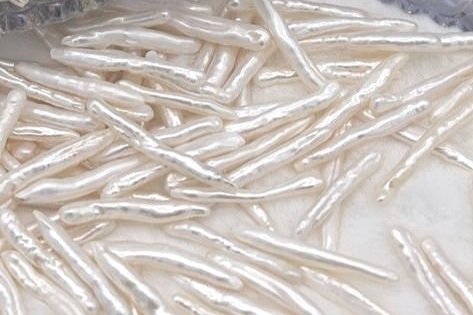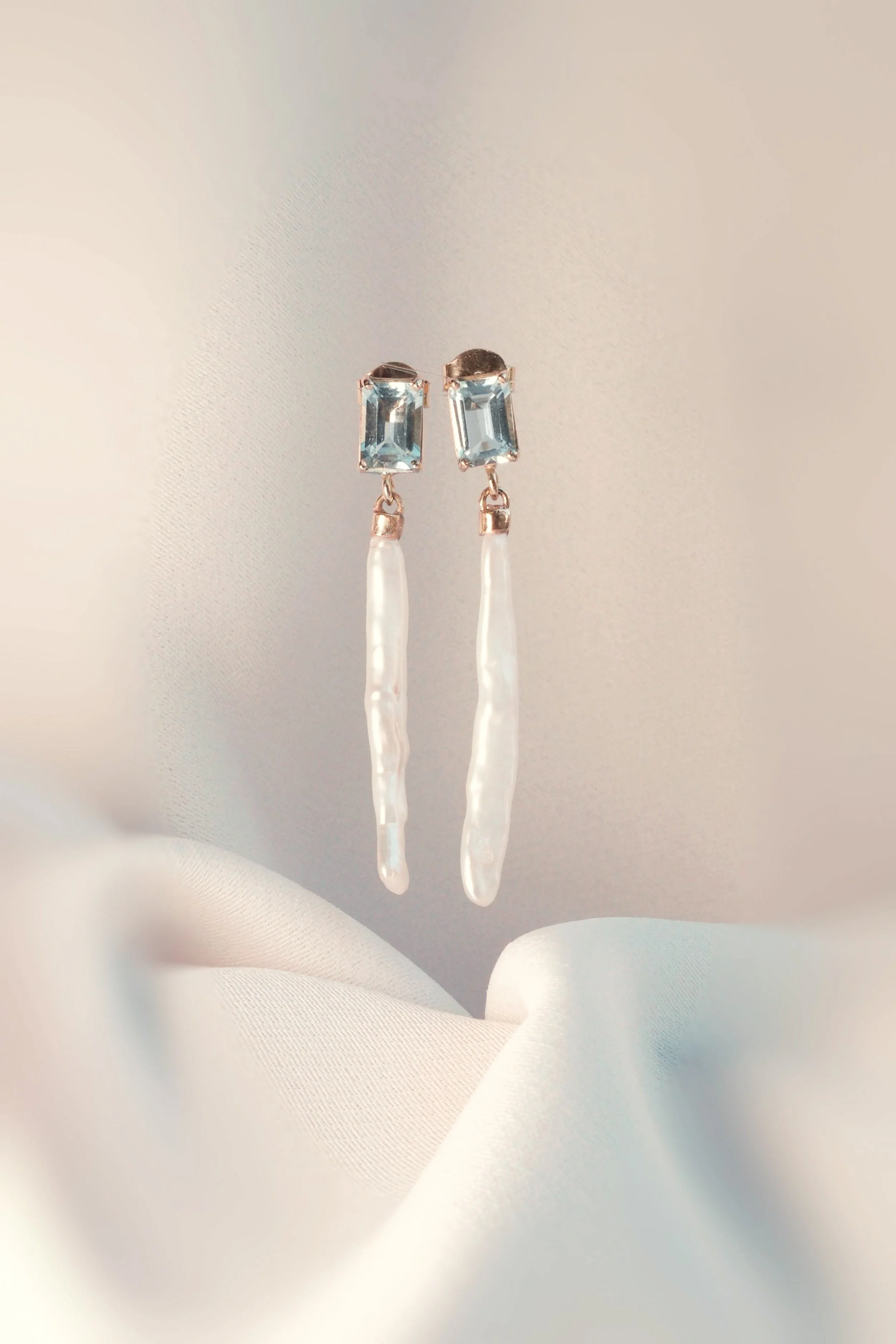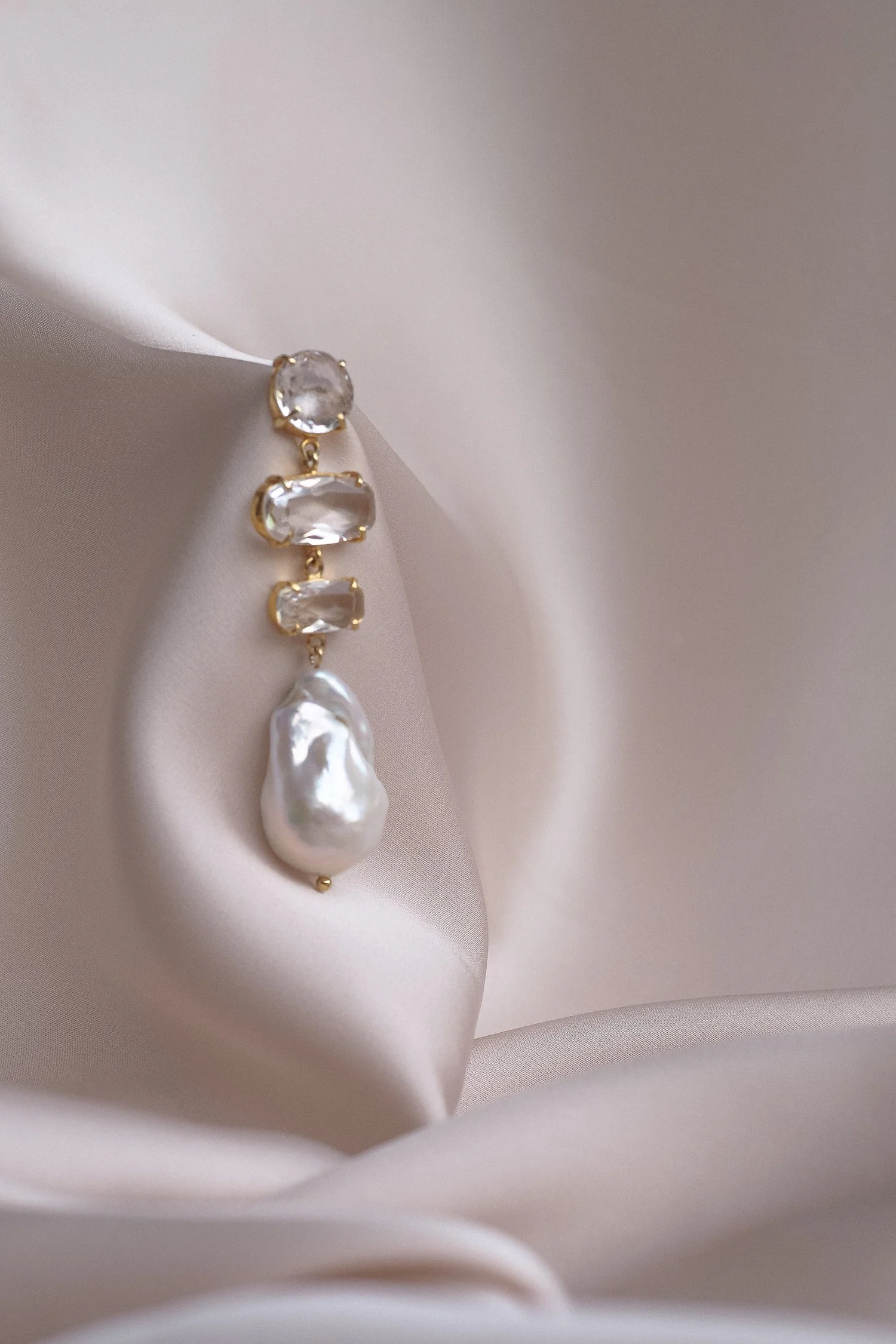
A Guide to Freshwater Pearls.
How to Buy Authentic Freshwater Pearls.
In this blog we offer you a guide to understanding and buying Freshwater pearls. better priced than their saltwater relatives, they are lovely addition to dress up your occasion. We love their timeless look which remains adaptable. and the fact that Freshwater pearls unlike saltwater, have an organic and unique appearance and a much more affordable price.
Amazing Pearl Facts from History
Once the most valuable thing in the world.
“The richest merchandise of all, and the most soveraigne commoditie throughout the whole world, are these pearles.”
C, Plinius Secundus (Pliny the Elder), Roman historian and writer, from Natural History, 77 A.D. “the pearl book” matlins antoinette
Marc Anthony’s obsession
Some of the world’s most prized pearls are natural freshwater pearls, their intense luster, made them highly coveted by the Romans. It's rumoured that the Roman legions led by marc anthony ventured into England mostly in search of the rare pink freshwater pearls
found in Scotland.
From Ugly to Uniquely Beautiful
"Baroque" as used in baroque pearls, comes from the
Portuguese and Latin word baroco, which was once a synonym
for "ugly" or "deformed." Today, however, this term has evolved to represent beauty and rarity.
The largest pearl in the World
The Hope Pearl, once the largest known historical pearl, is a massive, 450-carat freshwater baroque pearl. Shaped like a foxglove before it blooms, it features a stunning white-to-greenish-bronze color shift. Weighing 1800 grains, Sold in 1886, the Hope Pearl was offered for $200,000 in 1974.
Six top things you must know about freshwater pearls …
-
The key distinction between freshwater and saltwater pearls lies in the type of mollusk and the water in which they live. Freshwater mollusks can produce 3 to 10 pearls at a time, while saltwater mollusks typically produce only one or two. The time it takes for the pearls to form also varies, with freshwater pearls taking around 3 months to form, compared to up to 2 years for saltwater pearls. Another major difference is their shape: freshwater pearls are usually irregular, while saltwater pearls are almost perfectly round. Finally, the cost—freshwater pearls are generally much more affordable than saltwater pearls.
-
Freshwater pearls are a truly valuable addition. Their unique, one-of-a-kind shapes are rare, and their beautiful orient rivals that of saltwater pearls. For us, their organic forms make them exceptional choices for contemporary jewellery.
-
Yes, they are real pearls. The confusion arose when, after Mikimoto introduced mass pearl cultivation, pearl sellers used the term "cultivated" to discredit these pearls, implying they weren't "real." Today, almost all commercially sold pearls—whether saltwater or freshwater—are cultivated, meaning they are produced with human intervention.
-
Freshwater pearls are more affordable than saltwater pearls mainly because freshwater mollusks can produce up to 16 pearls at a time, while saltwater mollusks typically produce only one to three. Another factor is the time the pearls spend inside the mollusk—freshwater pearls take between 6 to 18 months to form, while saltwater pearls require at least 12 months, often up to 2 years.
-
With proper care, freshwater pearls can last a lifetime. While they are durable and resistant to damage, they should still be handled with care, just like any fine jewelry. For instance, smoke can cause yellowing, heat can burnish their surface, and hard impacts can scratch them, as they rank only 2.5-4.5 on the Mohs Hardness Scale, making them relatively soft.
-
Actually freshwater pearls should be worn regularly! as the natural oils from your skin help maintain their shine and keep them lubricated.
In matters of taste, there are no fixed rules…. (but here are our favourites)
petals shape pearl
big drop /pear /Barqoue pearl (Pastel, peach, lavender tones)
Biwa pearls
Baroque pear, drop
Round, frinnge, pear, button, semi- round pearls
Stick shape pearl
Chicken feet pearl
Coin shaped pearl
Why pearls make the best bridal accessory…
-
Versatile shapes, timeless glow—no wonder they were favored by Julius Caesar and coveted by Queen Elizabeth. Pearls' interior glow holds a magical quality among gemstones. Not only are they natural beauties that require no polishing or cutting, but they also carry deep symbolism and a rich history. Revered by kings and queens, and associated with gods and divinity, pearls are undoubtedly a timeless addition to any jewelry collection.
-
With their unpretentious glow, pearls are an elegant accessory that pairs perfectly with anything from jeans and a blazer to the most sophisticated gown or tuxedo. We love them for their simplicity and class, their brilliance without being overwhelming, and their universal association with good taste.
-
Freshwater pearls, especially baroque, capture our attention with their imperfections and irregularities. Each shape is unique and cannot be replicated—it's the beauty in their imperfection that makes them truly stand out.
-
Freshwater pearls are a wonderful, budget-friendly alternative to saltwater pearls, making them an ideal choice for brides. They're not only beautiful and versatile, but also perfect for pairing with other gemstones to elevate their charm. With freshwater pearls, you can enjoy the timeless elegance of pearls without the high price tag, giving you both beauty and value for your special day.
-
These organic and asymmetrical forms have a distinctive, all-natural appearance that we admire. They are ideal for adding a bit of uniqueness and personalization, and their smooth shine gives them a difficult-to-resist attractiveness.
Our Pearl Jewellery
You might also be interested in...
From sculptural earrings to dainty pearl hair pins, pearls add an interesting and organic element to any bridal look….KEEP READING.
















